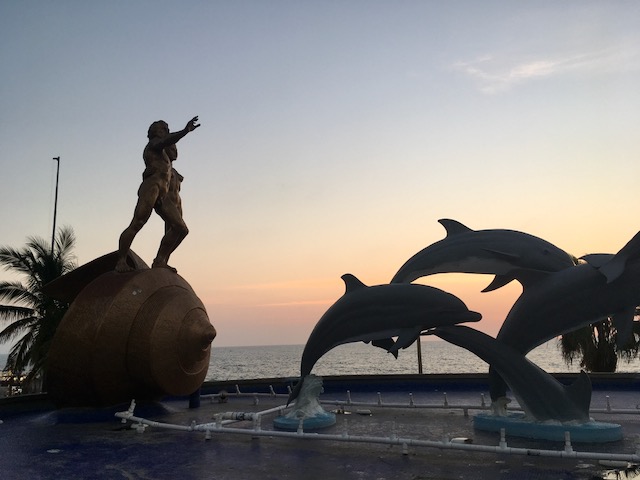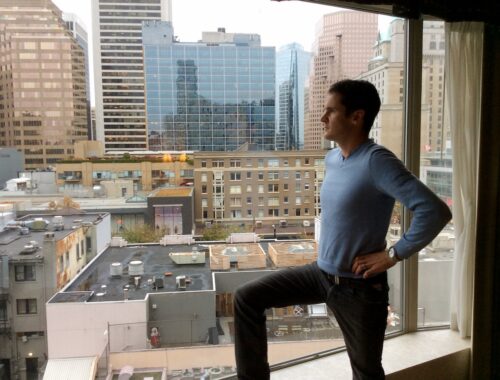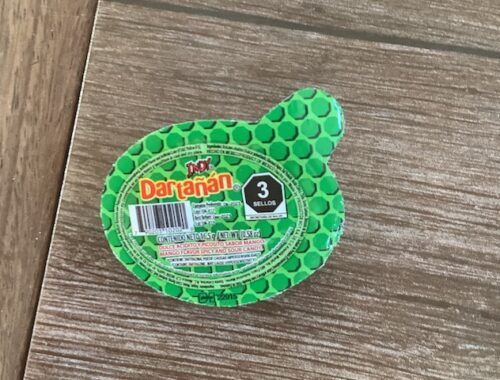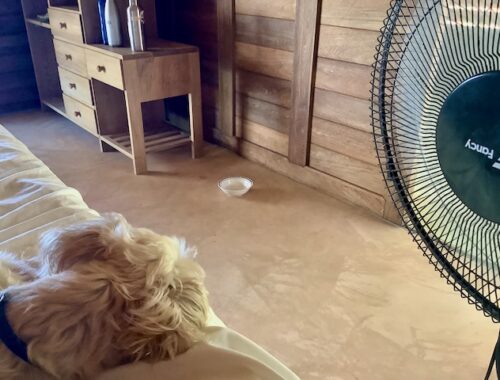
Mexico Roadtrip FAQ I
We’re almost two months into this thing – seen a lot of what the road can offer, but surely not everything – so it felt like a good time to share some of the lessons we’ve learned along the way. These aren’t questions people have asked, per se. Rather, these are things that I didn’t know or at least wasn’t certain about, until we got down here to experience it. The list is not exhaustive. I hope it will help with your own trip planning should you be thinking about an adventure of your own (see also: the entire point of this blog).
How do you get fresh water?
So how does that work? If you know Mexico, then you know you shouldn’t drink the water out of the tap. I brush my teeth with it and obviously it’s fine for washing dishes, but as a general rule not for hydration. Relying on bottled water from the store is inefficient: people need a lot of water – you’ll spend all of your time and money buying water by the liter. It’s also really bad for Mexico’s waste problem.
Invest in a big container. Canadian Tire has a large green one, looks like a gas can, holds 23 liters. Whenever it runs low, look for ‘agua purificada’ on a map and head there. The first time, it may be unclear if they will accept your container or how much it will cost, but it’s amazingly straightforward. They take it into a sanitized area, blast it clean and quickly fill it with water that’s gone through a half dozen steps to get to you. It’s probably better than the water you drink at home. It’s also crazy cheap. The other day, I had to buy a 5 L jug from the store for 25 pesos. Later I filled 2 jugs, almost 50 L, for 20 pesos. You do the math.
What does fuel cost?
Fuel is cheaper than back home, but not amazingly inexpensive. Probably more expensive or on par to cheaper places in the US or the Canadian prairies, but a better deal for sure compared to BC and California, for example. It costs us about $50 to fill out little car.
One thing to be aware of is how much the price can vary. In BC, at least, an entire region will usually get priced together (nice price collusion). Here, the same brand will have different prices on opposite sides of the highway. It pays to pay attention and figure out the going average.
The other side of that conversation is not to get overly fussy. Try to keep a half tank, especially if you are leaving a place. You will find spots that simply run out of gas. Or maybe the power is out and the pumps can’t work. Thankfully, Mexico is better than places we went through in Nevada about distances between stations. So, don’t sweat it, but don’t be an idiot.
Also, everywhere appears to be full serve, which grows on you over time. You may feel inclined to tip, but again, no need to overthink it. You ask for ‘regular, lleno’ (‘yay-no’ = full), or ‘verde’ if you’re at Pemex, which is the label colour of their regular grade.
Is it safe to park your car on the street overnight?
This one I was really unsure of and I was prepared for the worse. Now, I’m totally relaxed about it. We joke that our car is so filthy that no one would be interested, but there’s truth in that. I’m less worried about our car anywhere we’ve been so far, then I am about parking it downtown in most cities near where I live. That is not an exaggeration.
One of my favourite things about Mexico is the absence of crime, panhandlers, mental health emergencies, beggars, people howling in the streets, creeps, obvious drug dealers. It’s all absent (so far, to my eyes). Early on, I got in the habit of taking our toolbox off of the roof wherever we stopped. It looked the most valuable. Otherwise, I leave it all up there and at our current spot, the tool box has remained safely up there all week. Inside the car, we’re careful not to leave valuables, but there’s no reason we would. You arrive at a hotel and you take most of your stuff inside. What’s left, just isn’t that appealing.
Perhaps, in larger centers I may have to revisit my policy. But so far, the streets are perfectly safe to park.
What are you spending on food?
We cook almost everything ourselves. We’ve been pleasantly surprised at how many hotels have some sort of refrigeration or even a shared kitchen. Lately, with longer stays, we rent an apartment. In between, our cooler does what it can to keep staples like yogurt, deli meat and beer cold.
Lately, we’ve fallen into a good routine of loading up at large supermarkets and then supplementing with fresh produce and such from local markets. For example, we just spent about $100 for a week of food. Here are some highlights:
- ground beef, flank steak, frozen seafood
- fruit
- coffee
- beer and assorted drinks
- some packages of dry noodles and soup mix
- refried beans in a bag
- pasta sauce
- veggies
- big block of cheese
- some pastries, cheap bread
Eating out, prices can vary immensely. Some places, fish tacos will be 100 pesos, other places it will be 200. We generally keep it quite casual, or share dishes. Even then, sometimes you just need to spend $10 on a burger. There are so many places to get food – you don’t need to go to a sit down restaurant to get good food. And no, we haven’t tired of Mexican food.
Aren’t you worried about safety?
No. And I realize that that sounds somewhat aloof. If you do a little bit of research (especially using US Gov information) almost all of Mexico is under some degree of travel advisory. Yet how is it that there are expats living in all of these place and that hundreds of people do these types of trips annually? I admit, I wish that there was more concrete information about a lot of these places.
Oh, what is there to do in Town X? What can we expect there? What are people saying? The internet has few answers. This, understandably, can make it seem that maybe it’s not appropriate for travel (or merely not worth it). Then you arrive and see a bunch of vacationing Mexicans and Canadian license plates. It can be a bit confusing.
So yes, there is inherent danger to this trip. We could crash our car on unknown roads. We could get stung by jellyfish, get our pockets picked, lose our car keys, run into trouble with the police, or end up somewhere we shouldn’t and get into the kind of trouble you might have read about. That doesn’t mean it’s particularly likely. Be aware of the hazards, the cities or states that have ‘warnings,’ but don’t let them restrict you from coming to Mexico. People here are living their lives freely and without fear. You, as a foreign traveller, can easily do the same.

Feel it in your guts
You May Also Like

Explore Again
September 9, 2022
Are surprises always good? Sarah’s reviews!
December 27, 2022
